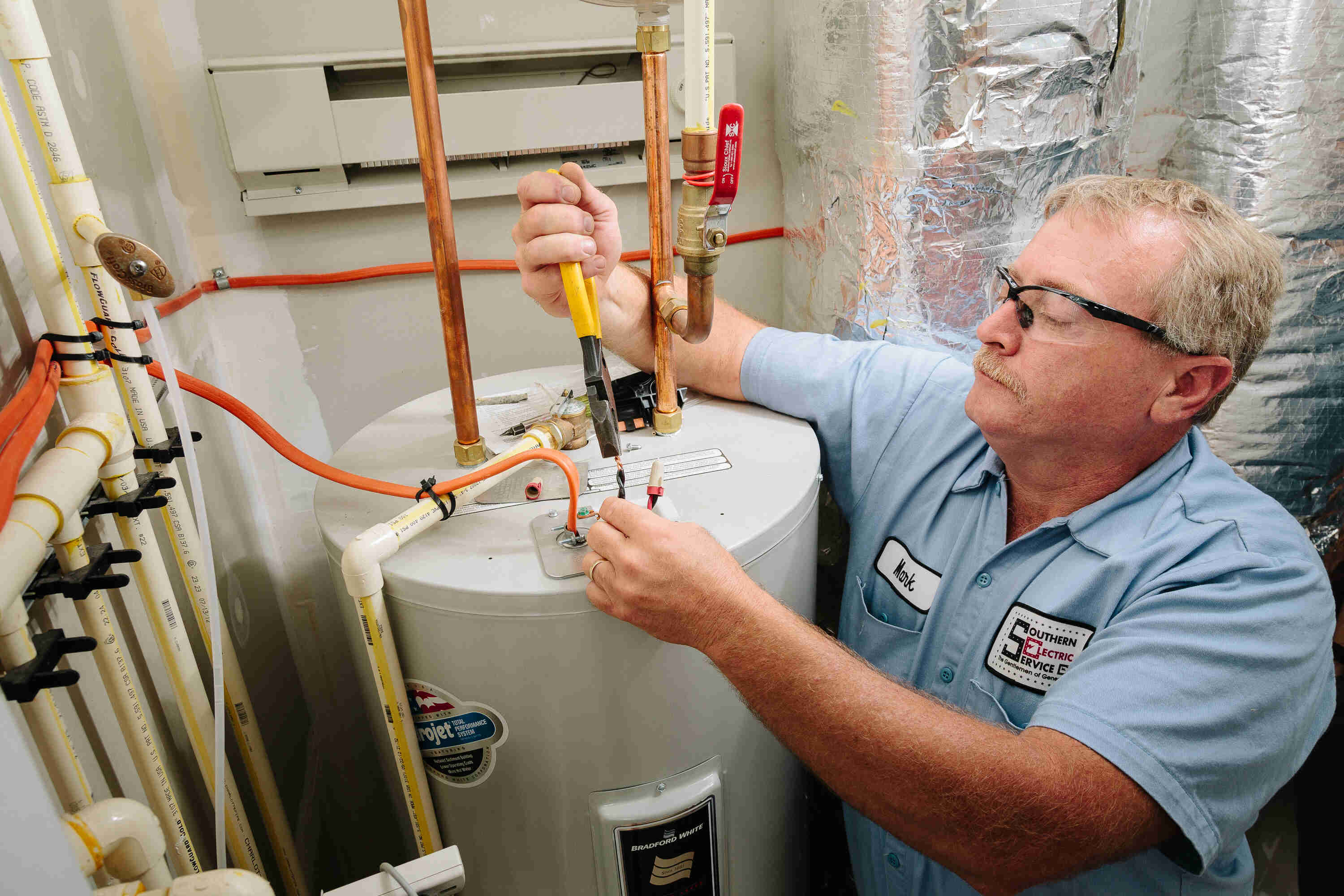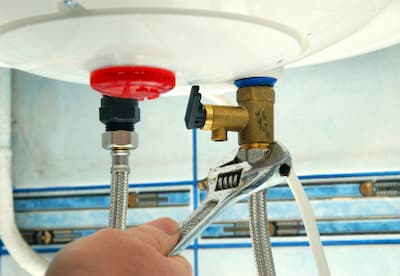How to Keep Your Home's Hot Water System Functioning Well
How to Keep Your Home's Hot Water System Functioning Well
Blog Article
Almost everyone is bound to have their unique idea on the subject of How to Maintain a Hot Water Heater in a Few Simple Steps.

Warm water is essential for everyday comfort, whether it's for a rejuvenating shower or washing meals. To guarantee your hot water system runs successfully and lasts longer, routine upkeep is key. This article gives useful pointers and understandings on how to keep your home's warm water system to avoid disruptions and expensive fixings.
Introduction
Keeping your home's hot water system could appear challenging, but with a few simple steps, you can ensure it runs efficiently for years to find. This overview covers every little thing from understanding your warm water system to do it yourself maintenance suggestions and understanding when to call in professional assistance.
Relevance of Maintaining Your Hot Water System
Regular maintenance not just expands the lifespan of your hot water system but likewise guarantees it runs efficiently. Overlooking maintenance can cause lowered performance, greater power bills, and even premature failure of the system.
Indications Your Hot Water System Requirements Maintenance
Understanding when your warm water system requires interest can protect against significant concerns. Keep an eye out for indicators such as irregular water temperature level, strange noises from the heater, or rusty water.
Flushing the Hot Water Heater
Purging your water heater removes debris buildup, boosting performance and lengthening its life.
Monitoring and Changing Anode Rods
Anode poles stop rust inside the storage tank. Checking and replacing them when worn out is essential.
Complex Issues Calling For Specialist Aid
Instances include major leaks, electric issues, or if your water heater is regularly underperforming.
Routine Specialist Upkeep Perks
Expert upkeep can consist of complete assessments, tune-ups, and guaranteeing compliance with safety criteria.
Evaluating and Changing Temperature Setups
Changing the temperature setups makes sure ideal performance and security.
Do It Yourself Tips for Upkeep
You can do numerous upkeep tasks yourself to keep your hot water system in leading condition.
Looking for Leakages
Consistently inspect pipes and connections for leakages, as these can result in water damages and higher costs.
Comprehending Your Hot Water System
Prior to diving into upkeep tasks, it's helpful to comprehend the basic parts of your hot water system. Typically, this includes the water heater itself, pipes, anode poles, and temperature controls.
Month-to-month Maintenance Tasks
Normal regular monthly checks can aid catch small issues prior to they escalate.
Checking Stress Relief Valves
Checking the pressure safety valve guarantees it works appropriately and avoids too much pressure buildup.
Shielding Pipes
Protecting warm water pipes minimizes heat loss and can save energy.
When to Call a Specialist
While DIY upkeep is beneficial, some problems call for professional competence.
Verdict
Regular maintenance of your home's warm water system is essential for effectiveness, long life, and price savings. By following these ideas and recognizing when to seek expert assistance, you can make certain a dependable supply of warm water without unanticipated disruptions.
Water Heater Maintenance: The Basics
Maintaining your water heater will ensure it operates efficiently and has a longer lifespan. Neglecting regular maintenance can lead to costly repairs and an even bigger chunk of your savings if you have to replace it sooner than necessary. But there’s good news: Most water heater maintenance tasks are relatively simple and easy for homeowners with basic DIY skills.
Flush the Water Heater
Over time, sediment and minerals can build up in the tank, reducing its efficiency and potentially causing damage. To flush the tank, turn off the power or gas supply, attach a hose to the drain valve near the bottom and open the valve to drain the water until it runs clear. Ideally, flush the tank annually.
Replace the Anode Rod
The anode rod is a sacrificial metal rod that helps prevent corrosion inside the tank. Inspect and replace it every three to five years or per the manufacturer's recommendation. To replace the anode rod, turn off the power or gas supply, drain a few gallons of water from the tank, unscrew the old rod and replace it with a new one. If the anode rod is significantly corroded or covered in calcium buildup, it's a sign the water heater may need to be replaced soon.
Tune-Up
A yearly tune-up can help identify potential issues and ensure your water heater operates at peak efficiency. This typically involves checking the thermostat, burner assembly (for gas heaters) and any other components specified by the manufacturer. During a tune-up, the technician may also clean the burner and adjust the pilot light (for gas heaters) or examine the heating elements (for electric heaters).
How to Maintain Your Water Heater
Insulate the tank. Insulating the tank can improve energy efficiency and reduce heat loss, saving you money on energy bills. You can purchase precut insulation blankets designed specifically for water heaters or use standard fiberglass insulation wrapped securely around the tank. Check the temperature. The recommended water temperature for most households is around 120 degrees Fahrenheit (49 degrees Celsius). Higher temperatures can increase energy costs and potentially cause scalding. Use a kitchen thermometer to check the temperature at the faucet nearest the water heater. Monitor water pressure. Excessive water pressure can strain the water heater and cause leaks or even tank failure. Install a pressure-reducing valve if necessary. The ideal water pressure range is between 60 and 70 PSI (pounds per square inch). Test the temperature and pressure (T&P) relief valve. The T&P relief valve is a safety feature that releases pressure if the tank gets too hot or the pressure builds up too high. Test it annually by lifting the lever and allowing a small amount of water to release. Replace the valve if it doesn't release water or reseal properly. Check for leaks. Regularly inspect the tank, pipes and fittings for leaks or corrosion. Deal with issues promptly to prevent further damage. Even a small leak can lead to significant water damage over time. Consider a tankless water heater. If your traditional tank-style water heater is nearing the end of its lifespan ( typically 10 years), consider replacing it with a tankless water heater. These units heat water on demand, reducing standby energy losses and potentially saving you money on your energy bills. Schedule professional maintenance. While homeowners can perform many water heater maintenance tasks, it's still a good idea to schedule professional maintenance every few years. A plumber or HVAC technician can thoroughly inspect the unit, identify potential issues and ensure it operates safely and efficiently. https://www.homeserve.com/en-us/blog/home-improvement/hot-water-heater-maintanence/

I was made aware of that article on How to Maintain Your Water Heater & Prolong its Life from an acquaintance on our other web property. Are you aware of another individual who is inquisitive about Tips on Maintaining a Water Heater? Please feel free to share it. Thanks so much for your time spent reading it.
Click Here Report this page